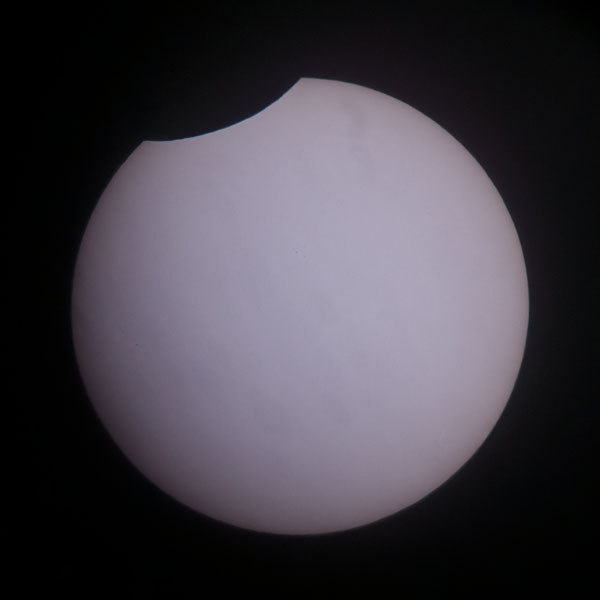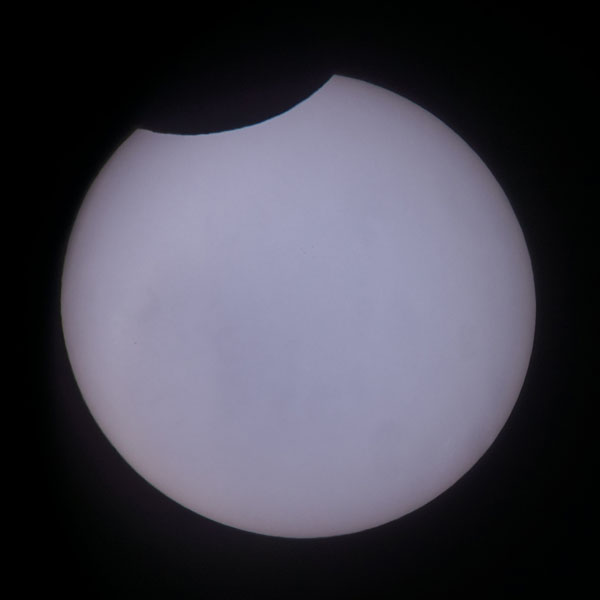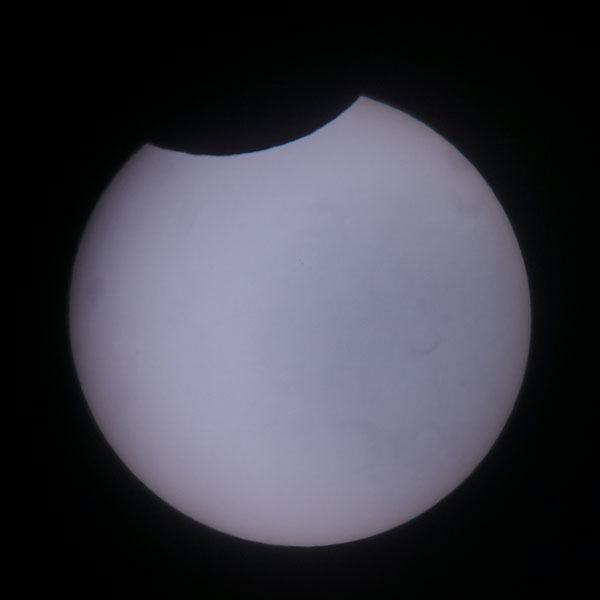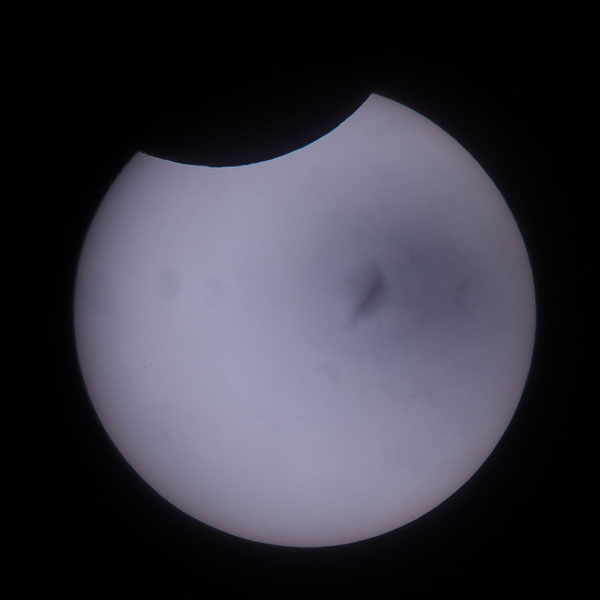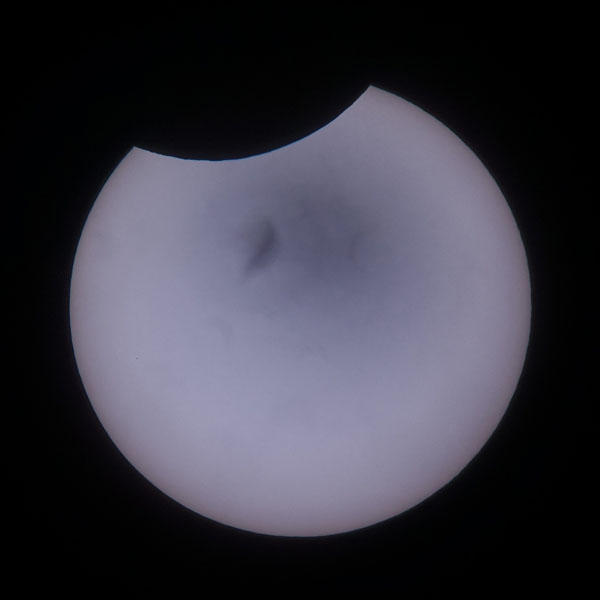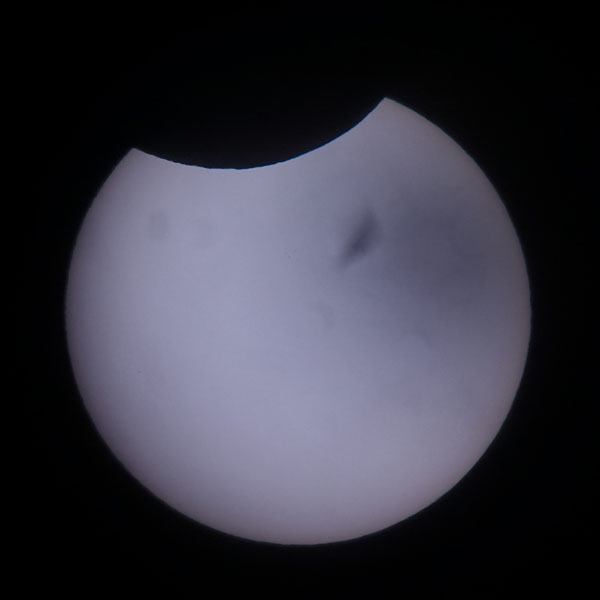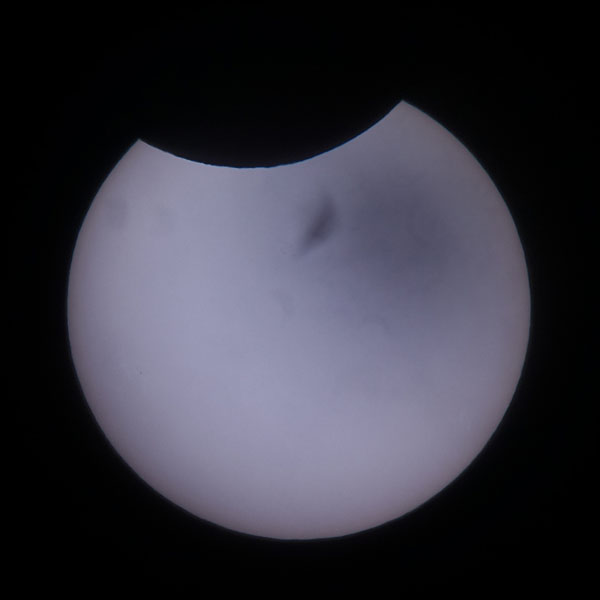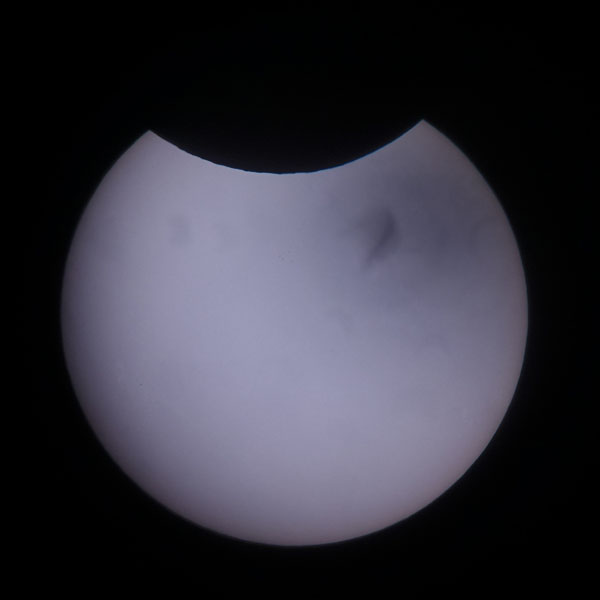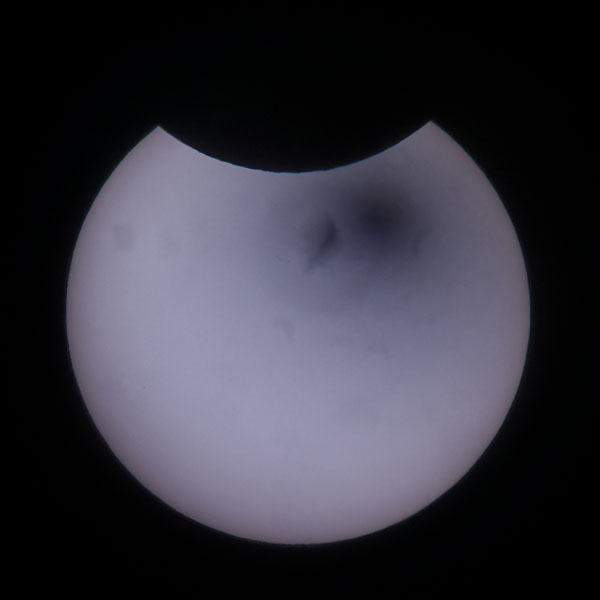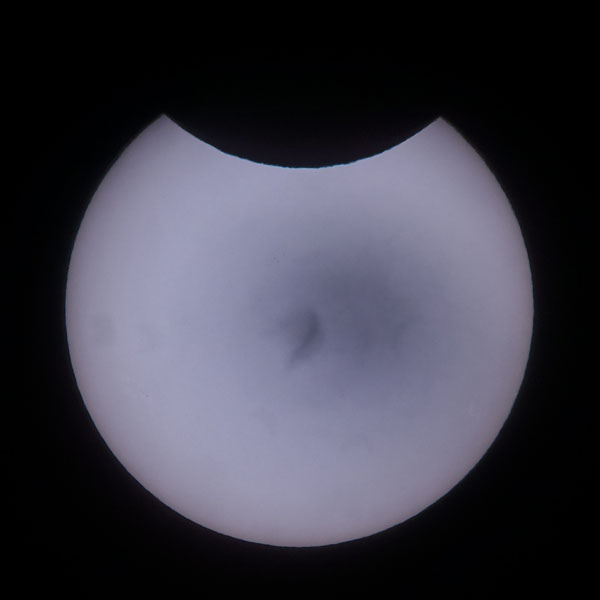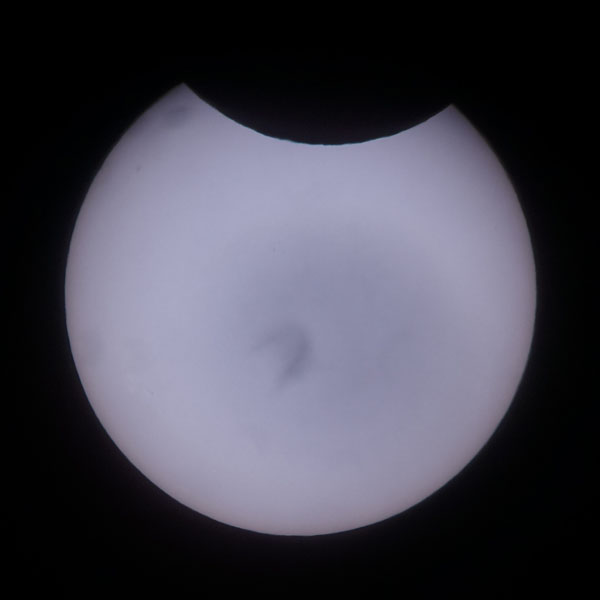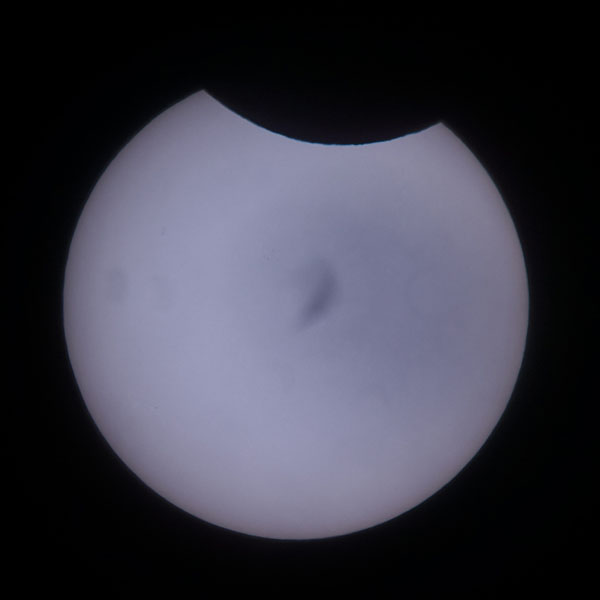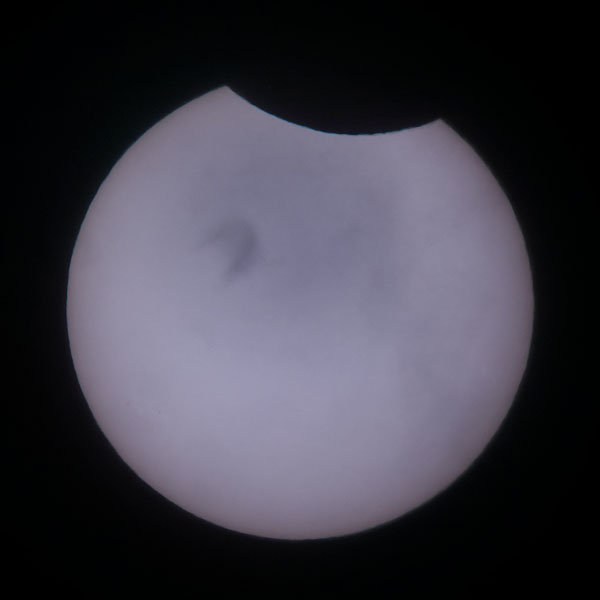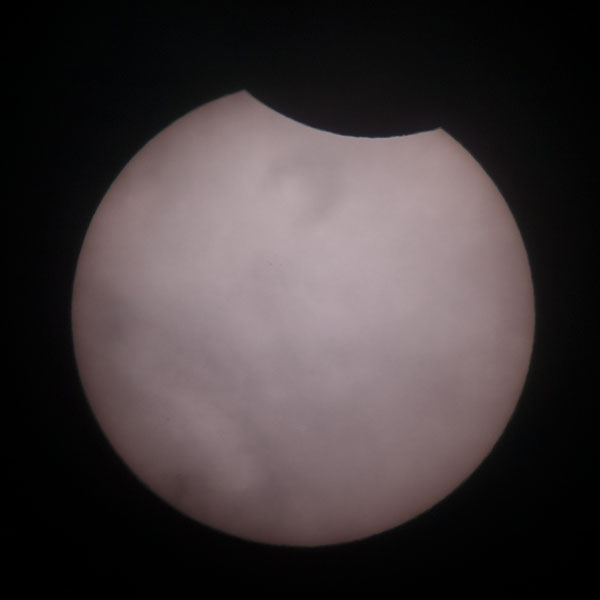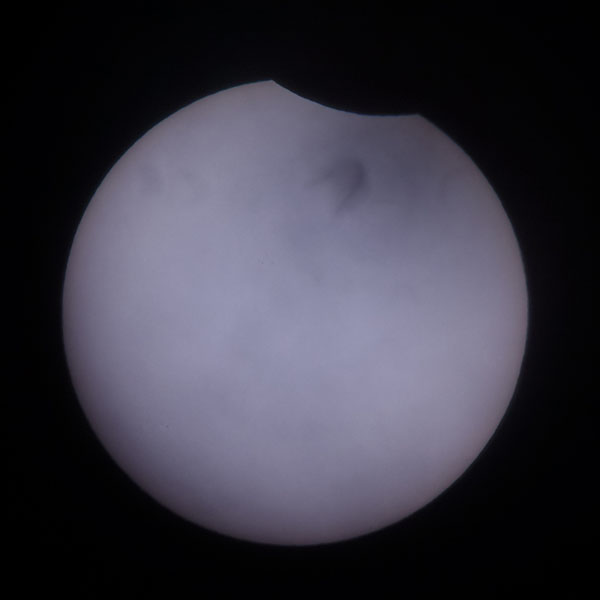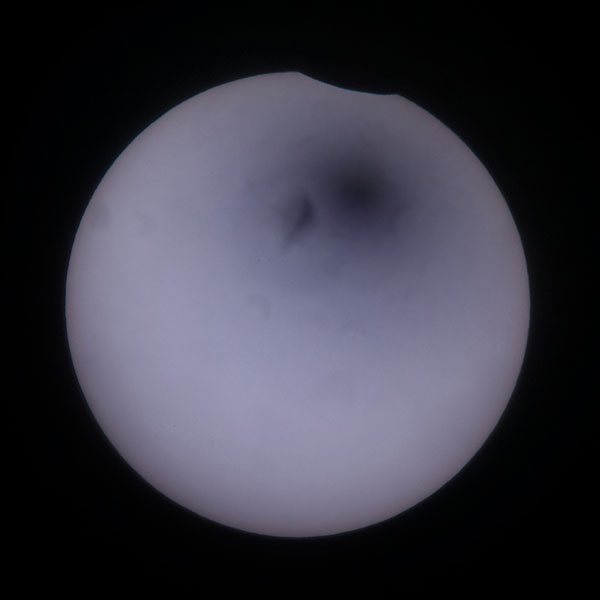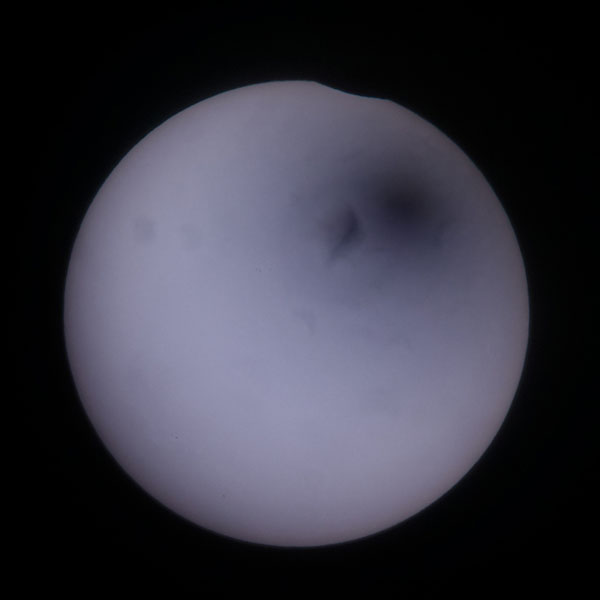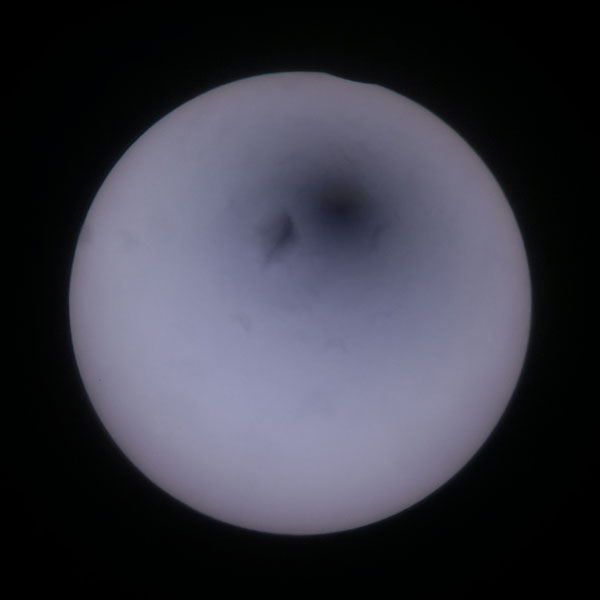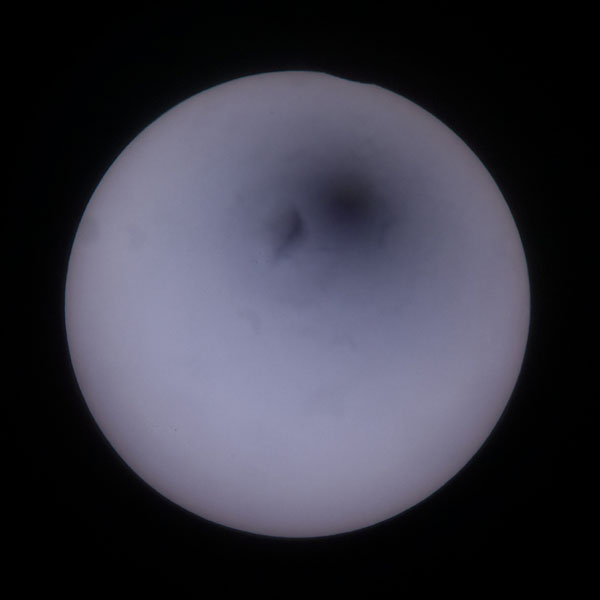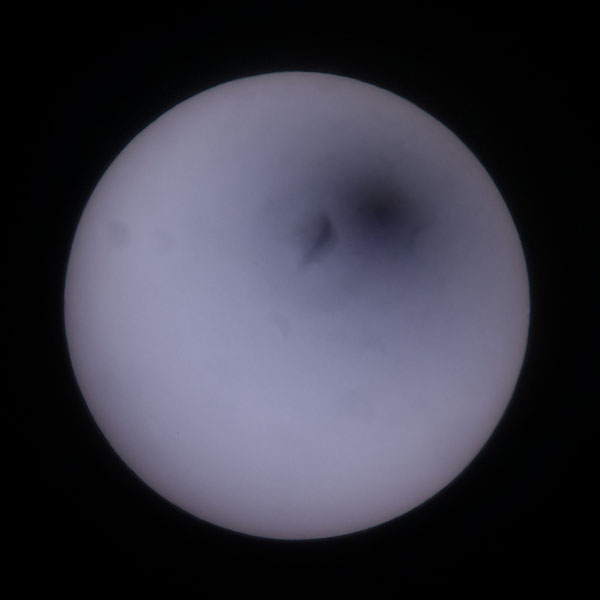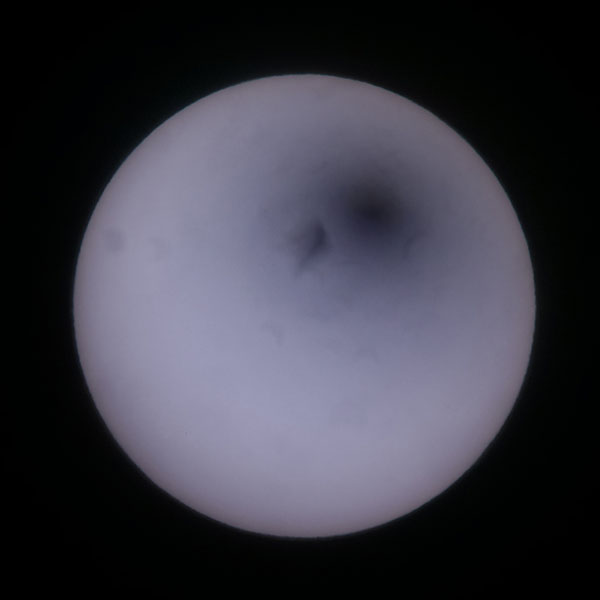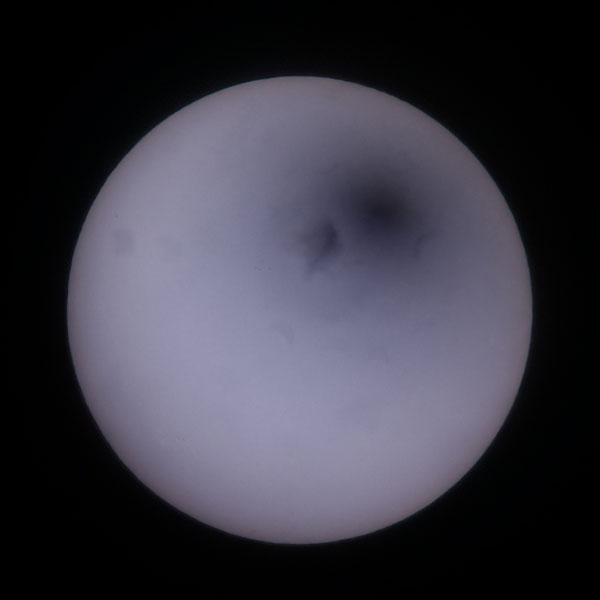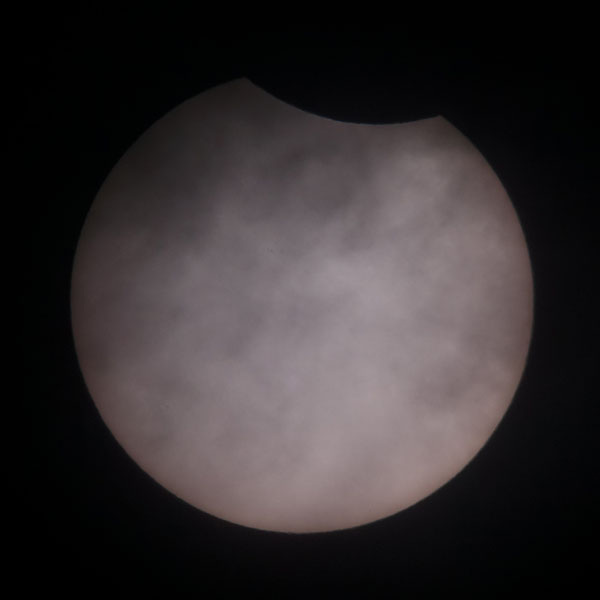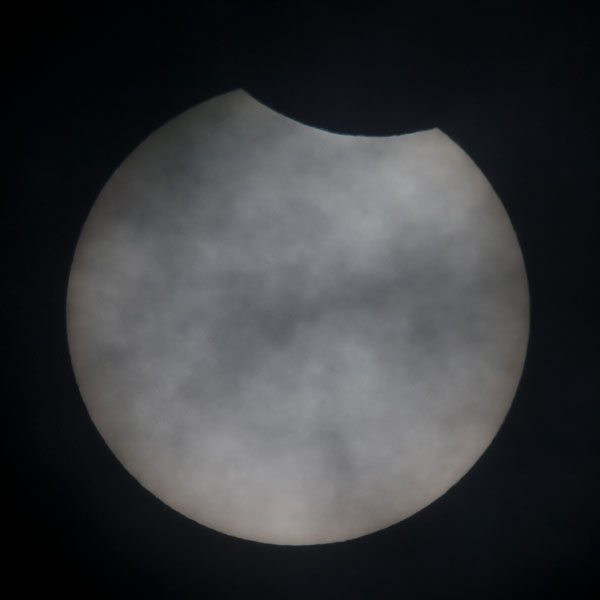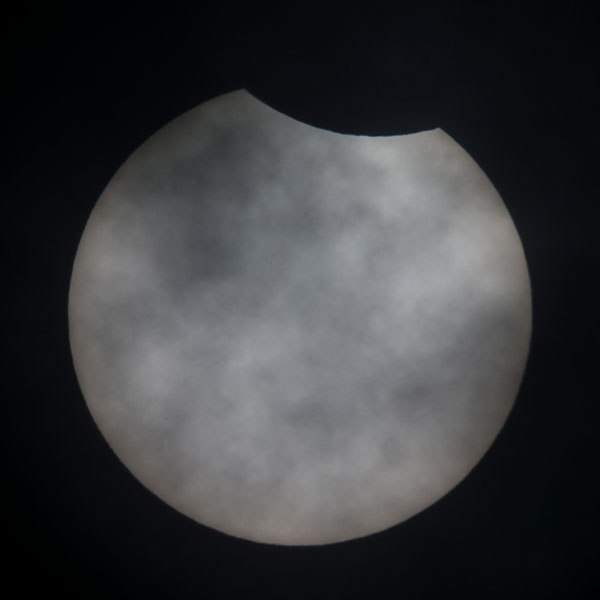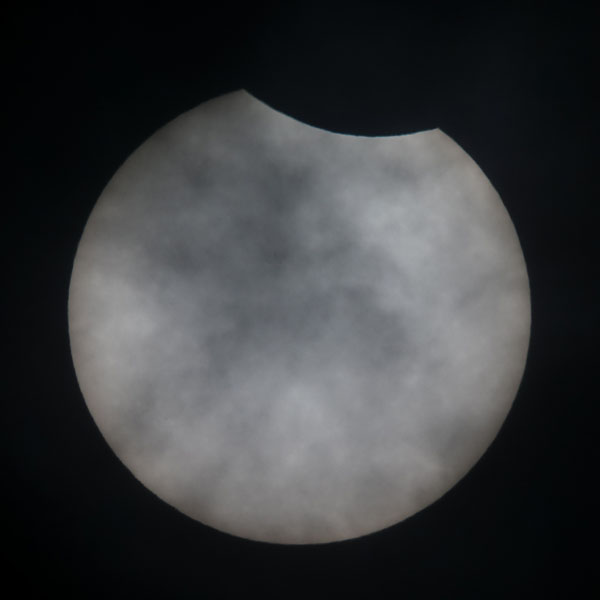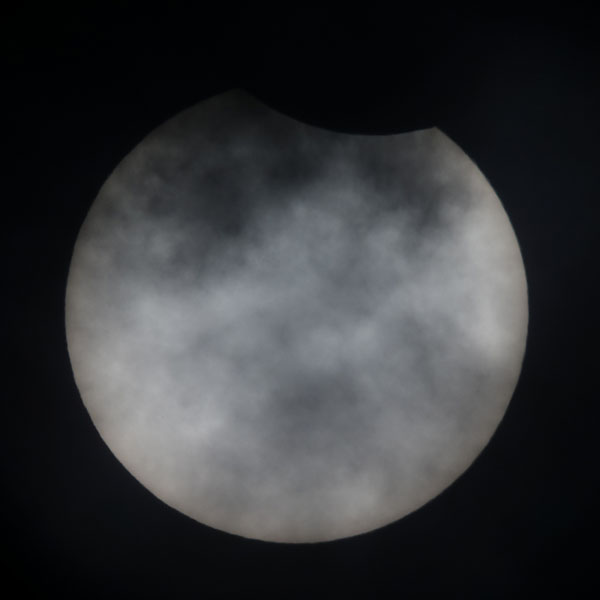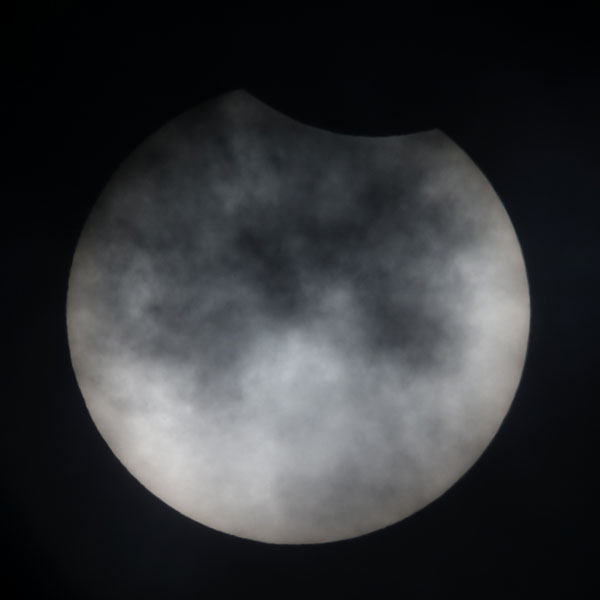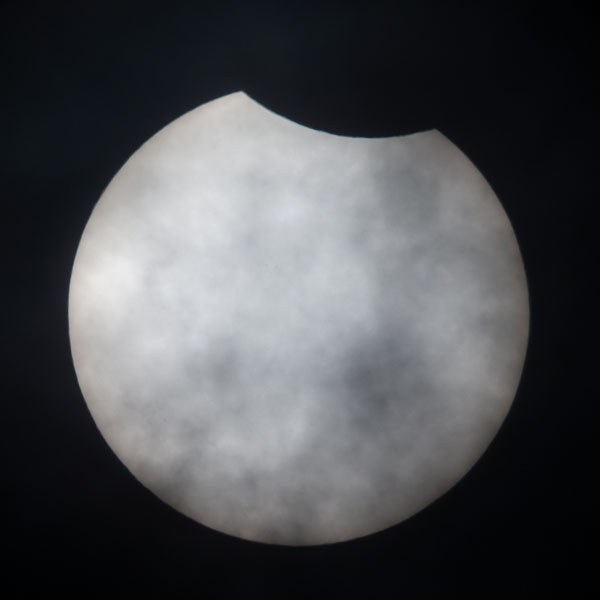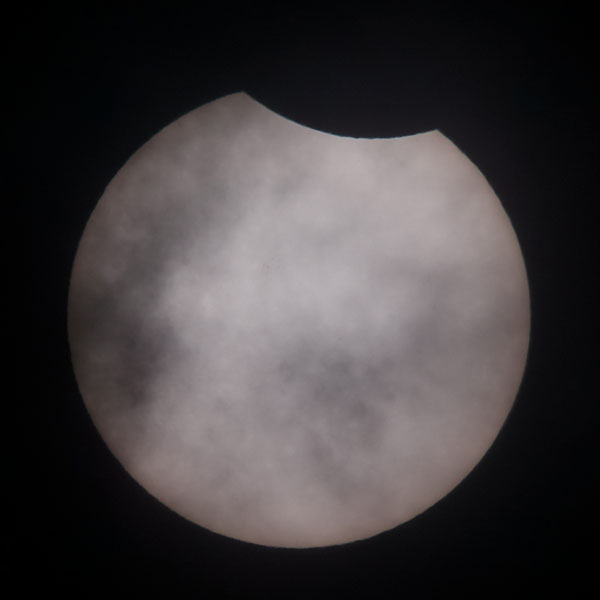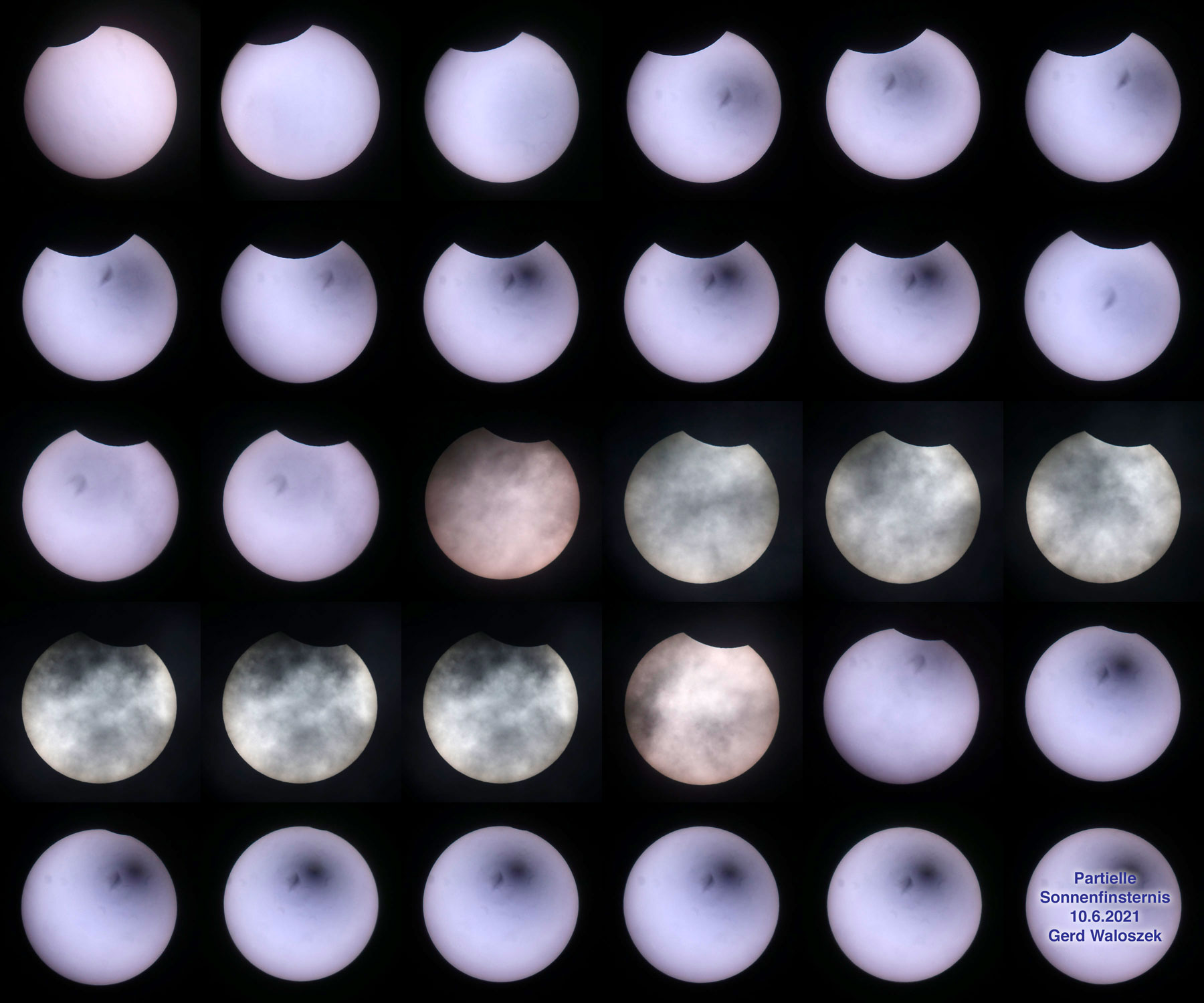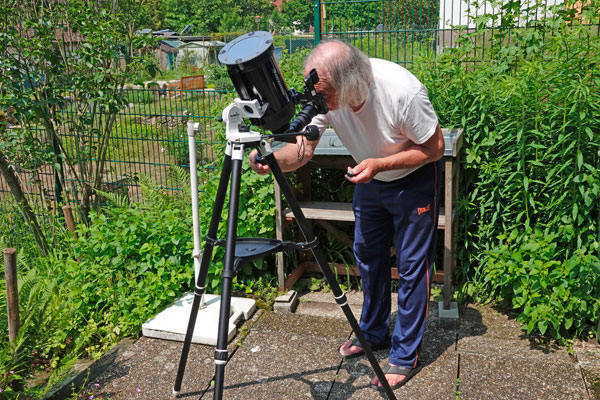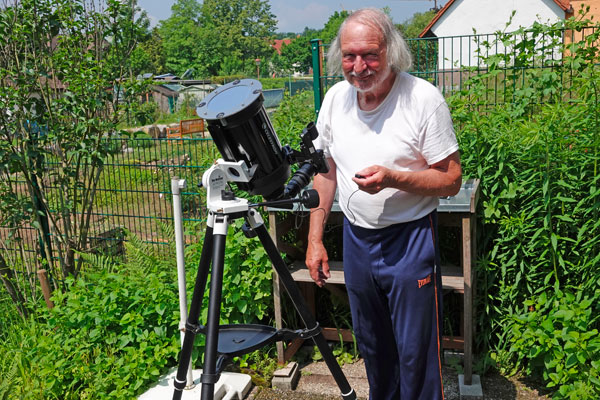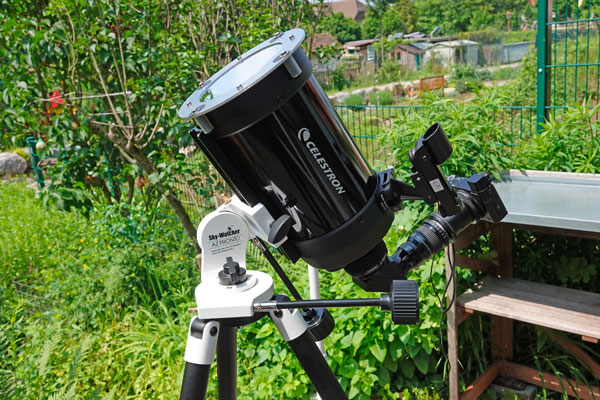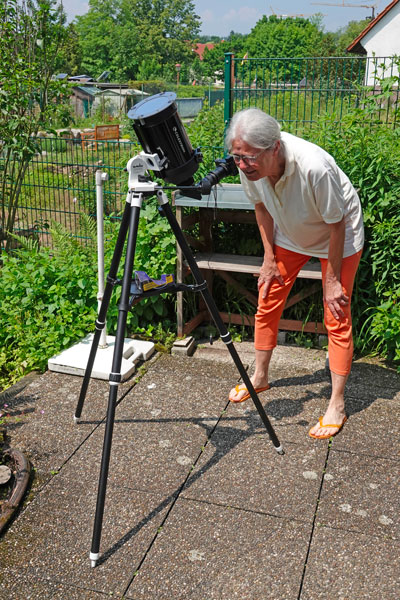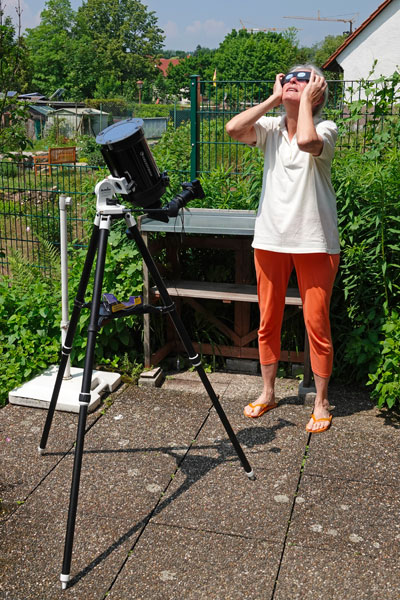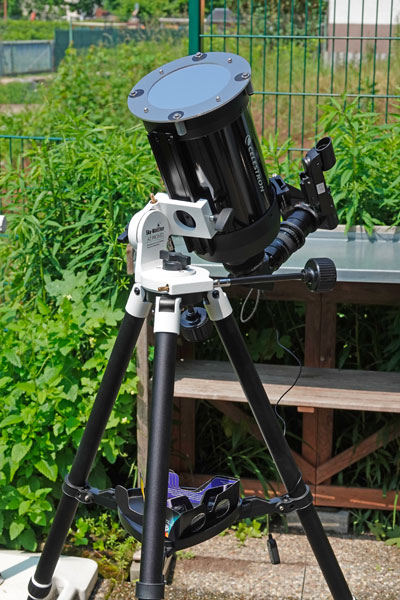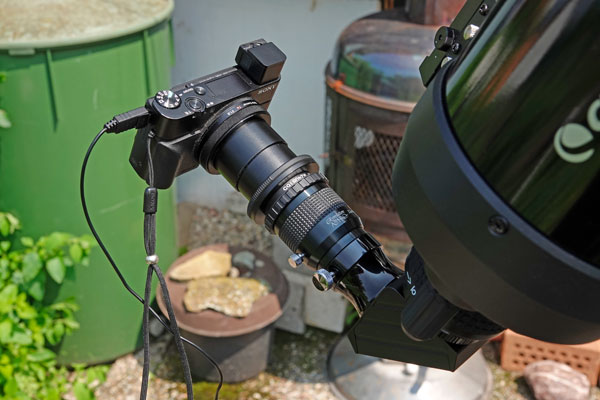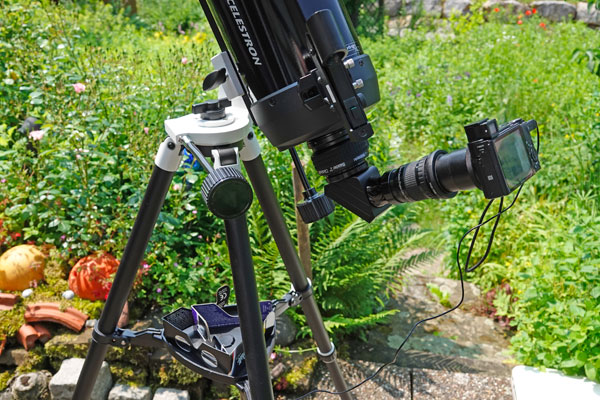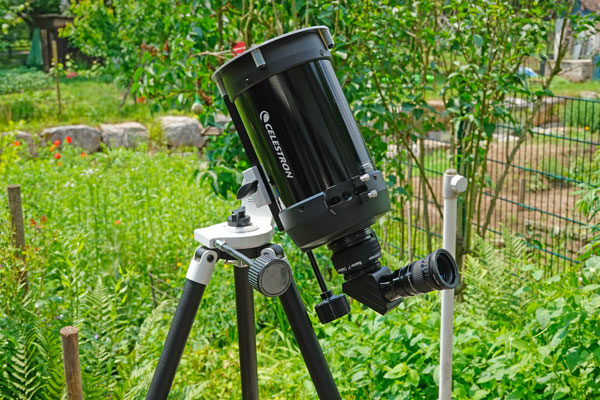Partial Eclipse 2021
Introduction | Photos of the Partial Eclipse | Photos of the Observers and the Equipment | Links
Introduction
On June 10, 2021 a partial solar eclipse could be observed in parts of Europe, 6 years after the one on March 20, 2015. In parts of the world (Canada, Greenland) it also appeared as annular solar eclipse. Annular means that this time the moon was not big enough to cover the sun completely. In contrast to the previous partial solar eclipse, the degree of coverage from north to south was about 15% to 5% or less. In 2015, it was still between 70% in the south and more than 80% in the north. So this eclipse was as little spectacular as the previous one. Depending on the location, the observation time varied again; here in Mühlhausen (Kraichgau) it was about between 11:10 and 13:10. For details, see the links below or Wikipedia. After quite changeable weather in the days before, we had a lot of sun on the day of the eclipse. Only rarely clouds pushed in front of the sun, so this was no problem. Only in the afternoon there was a heavy downpour, but I had already brought everything to safety.
This time again, I wanted to document the whole course of the eclipse (my starfriend even wanted to film the eclipse...), but this did not result in as many photos as it did the previous time. And again, I ended up being ill-prepared for the event, I just do not learn! Well, when I read the report of the previous eclipse, I have learned already a little bit...
This time, I used a telescope for the observations (we also used special glasses). I used my Celestron C5 (without reducer) with my 32 mm Digiscope eyepiece (Plössl), resulting in a magnification of 40x. Initially, I wanted to operate the telescope on my AZ-GTi mount (with my new stainless steel tripod) and control the mount with the SynScan app. Since I had not prepared accordingly, I did not know how to have the sun automatically approached and tracked. With the 1-star alignment, only planets appeared on the object list... So I thought, I will set the tracking mode to "lunar" and approach the sun manually, then the mount will track the sun after all. And then happened once again what I already had imagined: I just could not find the sun in the eyepiece! And the beginning of the eclipe became closer and closer!
So I have quickly decided to "cancel" the tracking (it would indeed have interested me...), got out the AZ Pronto mount, and put the C5 on it. With the help of the flexible shafts and some luck, I then found the sun fairly soon! Since the sun now moved out of the field of view again and again, I could not wait too long, until I moved the tube to capture the sun again. Otherwise it would have become again a painful search. Only once I waited too long and just with some luck found the sun again.
With the 32 mm Digiscope eyepiece the sun fitted well into the field of view. I wanted to attach my Sony RX100 M4 to this eyepiece, for which I had already acquired appropriate adapters some time ago (see page Sony RX100 M4 Attached to Telescope). Unfortunately, I started my search for the adapters a bit late, so that I had to hold the camera to the eyepiece for the first photos (1:50 method). But later I found everything and attached the camera to the eyepiece, which simplified the whole matter a lot. I used the viewfinder to determine the image section, and later a Sony RM-SPR1 remote control to release the shutter. I had a little trouble with focusing using autofocus; it mostly worked when I set the metering field to the edge of the sun. I used auto exposure (P mode) and underexposed slightly. So I guess the sun would have appeared white (I did not realize any sunspots), but because there was dust in the optics, the sun was "patterned". But I did not feel like removing the dust during the eclipse...
While during the previous partial solar eclipse a certain darkening was to be recognized, this time, of course, nothing of it was to be noticed, because of the small coverage (10%). Only the owners of solar systems might have noticed a slight decrease...
By the way: The next solar eclipse will be visible in Germany already on October 25, 2022. It will also be partial one, with a coverage between 23% and 32%.
Photos of the Partial Eclipse
A few comments on the photos below:
- The time was set incorrectly for the camera (Sony RX100 M4): it was about 1 minutes ahead of the actual time. I did not correct the time stamps accordingly - you should not take the values too seriously.
- Important camera settings: P(rogram) automatic, ISO Auto, focal length 24 mm equivalent , center-weighted exposure metering, EV mostly -0.3.
If you click a thumb nail, a 1:1 section of the image will appear in a new window. You have to close this new window manually. The structures on the sun are caused by dust in the optics!
After Start to Maximum |
||
|
11:41 CEST |
||
Retreat from Maximum |
||
|
12:44 CEST |
||
Final Phase |
||
| Partial Eclipse, June 10, 2021 - Sony RX100 M4 at C5 with 32 mm eyepiece | ||
Clouds Appearing for a Moment...
Partial Eclipse, June 10, 2021 - Sony RX100 M4 at C5 with 32 mm eyepiece |
||
Eclipse 2021 Mosaic
I put together the following mosaic of the solar eclipse 2021 from the above photos (without duplicates):
Photos of the Observers and the Equipment
|
Gerd |
||
Links
- Solar eclipse of June 10, 2021: en.wikipedia.org/wiki/Solar_eclipse_of_June_10,_2021
- June 10, 2021 Eclipse (NASA): www.nasa.gov/content/june-10-2021-eclipse
German-Speaking Links
- Sonnenfinsternis vom 10. Juni 2021 (Wikipedia): de.wikipedia.org/wiki/Sonnenfinsternis_vom_10._Juni_2021
- Website about solar eclipses: www.sonnenfinsternis.org/sofi2021a/index.htm
| 25.10.2022 |
